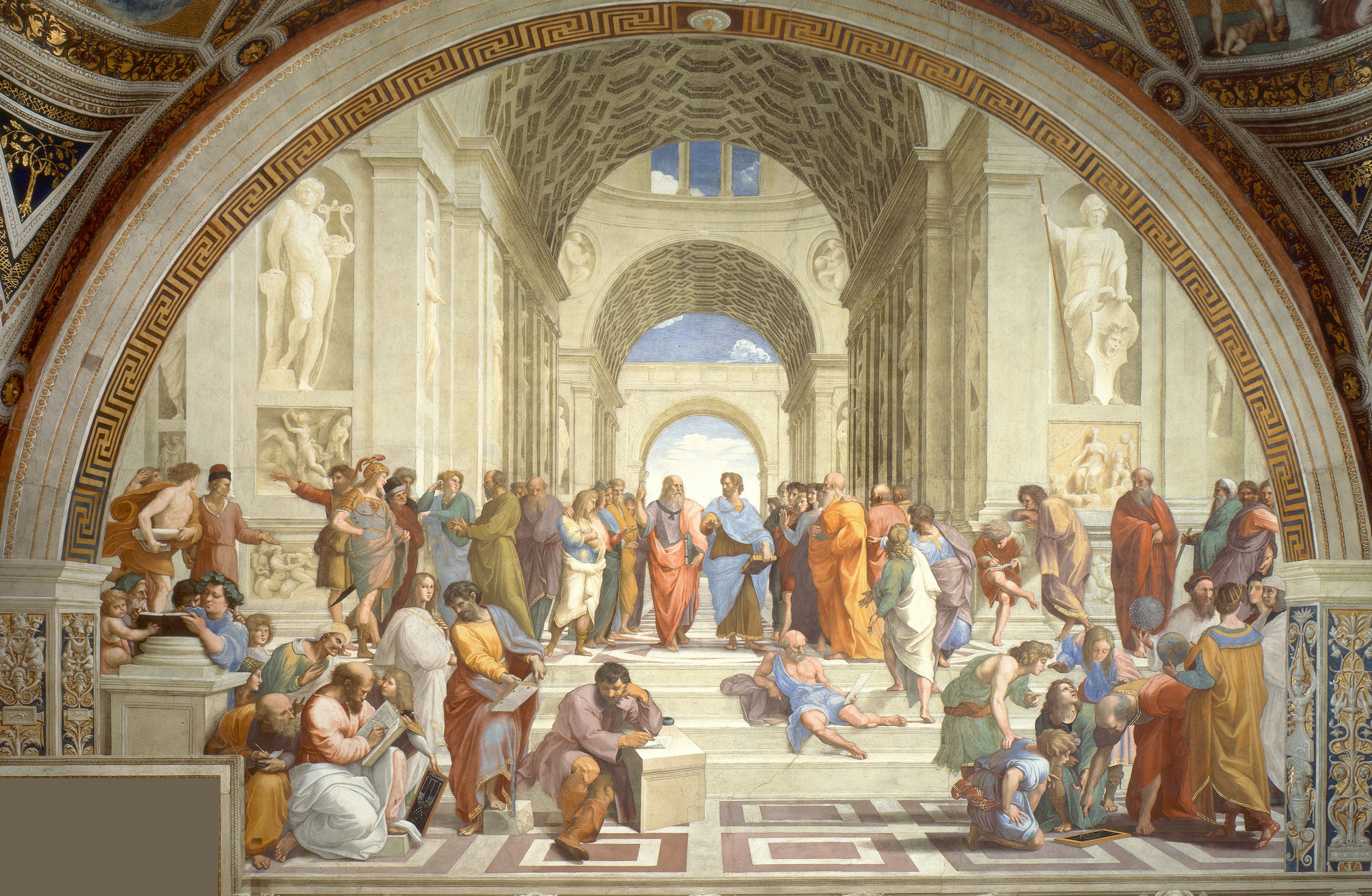
“The School of Athens” (by Raphael) mirrors society by depicting elements of the Renaissance era. The Renaissance was Europe’s ‘rebirth’ of knowledge that was lost in the middle ages. Society began to break free of the Church’s absolute control so that they could observe and discover the world around them. They turned to their Greek and Roman roots for ideas and inspiration that would later mould their culture. “The School of Athens” mirrors all of these elements. It is a gathering of all the major humanist figures of the Renaissance era. They represent science, mathematics and philosophy, three things that were revolutionized during the Renaissance. The fact that they are gathered in the school of Athens, shows that the root of all their genius came from their past. The room itself is a secular fantasy. Plato and Aristotle stand at the focal point, dividing the room into two sections of practical and abstract. People are discussing and learning about geography from Ptolemy, Astronomy from Zoroaster, and Math from Pythagoras himself. There is a debate going on between several individuals, and many hold books and are writing. These events mirror those that were happening at the time in Europe. Explorers were venturing farther than ever before, bringing back exotic concepts from faraway lands and gaining a better picture of the Earth. Astronomers were observing the stars and planets, so that they may deepen their understanding of the universe. Math was evolving into an essential concept that was needed to live life successfully. The debating represents all the turmoil that was forming between the church and the humanists. The books and writing represent the printing press, which was revolutionizing Europe at the time by spreading secular ideas, educating the lower classes, forming critical thinking, spurring the urge to question the church’s authority, creating national identity and promoting individualism. Raphael has created a masterpiece on the walls of the papal palace. A masterpiece that not only epitomizes the beauty of classical renaissance artwork, but also emulates a wide variety of events that was significant to the Renaissance and its development.
Who Would I Be?
If I were to be included in the painting, “The School of Athens” I would see myself as Heraclitus. In the painting, he is depicted sitting on the bottom step, resting his head on one hand atop of a marble table and scribbling a few notes on a piece of paper. Heraclitus was a Greek philosopher. He was Pre-Socratic, which meant that he lived before classical western philosophy was developed by Socrates, and rejected using traditional mythological stories to explain the phenomenon around him. He took a more rational route, asking questions like “From where does everything come?” “How might we describe nature mathematically” or “From what is everything created?” He was of a distinguished family, and regarded himself as self-taught and a pioneer of wisdom. He was sometimes called “The obscure” or “The weeping philosopher” for the lonely life he led, and his contempt for the human race. He was famous for thinking of time as something that is infinite and constantly in flux, and for believing in the unity of opposites. He stated “The path up and down is one and the same.” This means that though two things may be opposites, they are connected and can change at any one time. He also created Logos, an important term in philosophy, rhetoric, religion, and analytical psychology. I see myself as him, because I too like to spend long periods of time mulling over single events in my life. I have a curiosity about the questions of pre-Socratic philosophy. Though I am faithful to my religion, I don’t feel I fully believe all that it states. I spend time wondering if anything really does happen after death, and about how infinite the universe is. Like him, at times I feel I am leading a lonely life. However I do not consider myself a self-taught pioneer of wisdom, nor do I have any contempt for the human race. Heraclitus is placed on the philosophical side of the painting. This relates to me because I like to picture what cannot be seen in our day to day lives through my imagination. Heraclitus made significant contributions that affected the lives of many to this day, and I aspire to do the same in my career.

